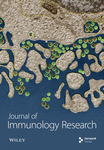Age-related Changes in p56lck Protein Levels and Phenotypic Distribution of T Lymphocytes in Young Rats
Abstract
p56lck is involved in the maturation of T-cells from double negative (DN) into double positive (DP) T-cells. The objective of this experiment was to determine changes in the levels of thymic and splenic T-cell p56lck using Western immunoblotting, along with the proportion and number of T-cell subsets in thymus, spleen and blood using flow cytometry in growing Sprague-Dawley rats. Thymic p56lck levels were negatively correlated with age (r=-0.42, p=0.04) and positively correlated with age in the spleen (r=0.50, p=0.01). Nine-week-old rats had a higher percentage of thymic DN and CD8 cells with fewer DP cells compared to younger rats. There were minor differences in the proportions of T-cell subsets in the spleen and blood. T-cell numbers remained proportional to body weight in the lymphoid organs; however, the lower absolute number of T-cells in the younger rats might indicate that they are less able to respond to antigens.




